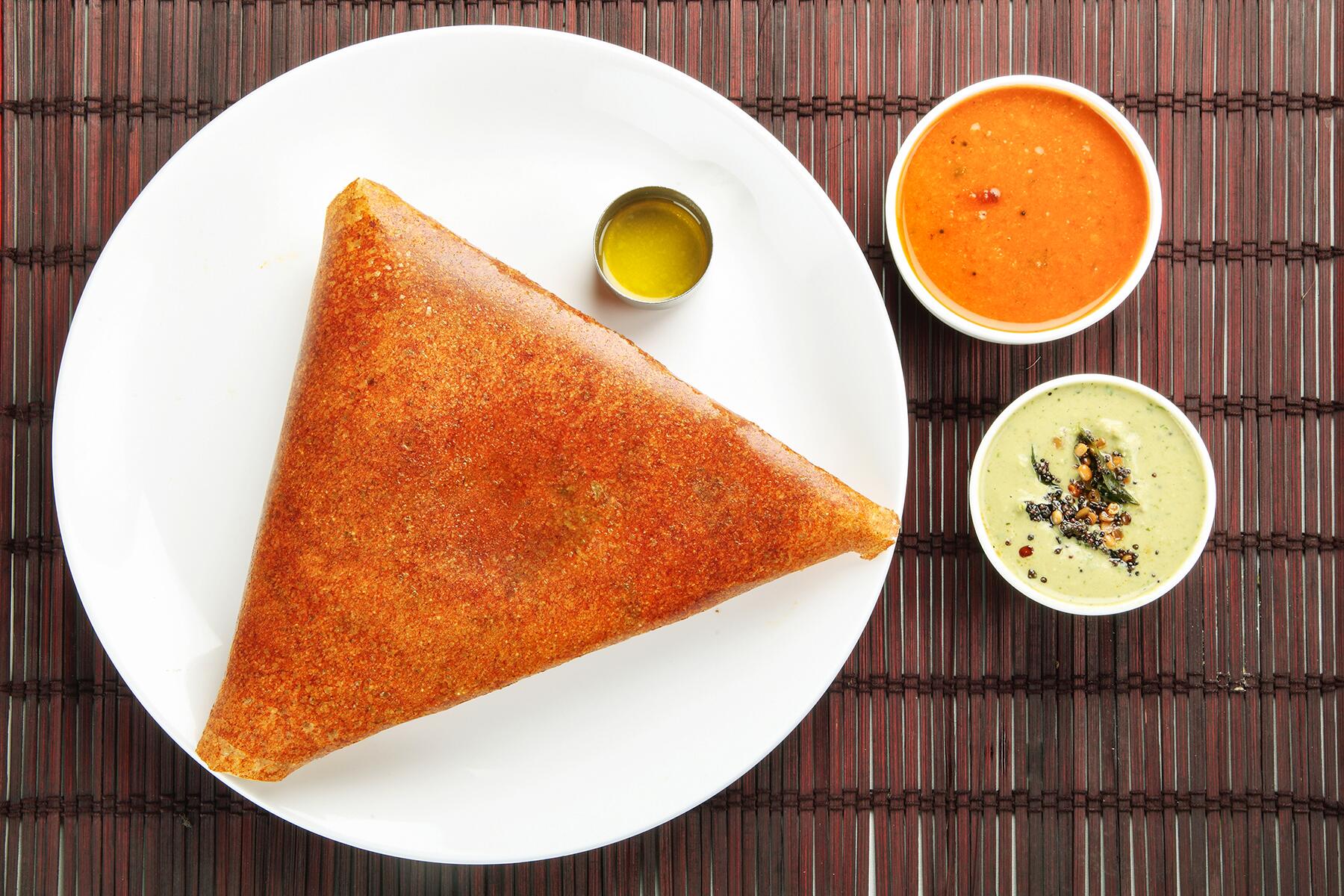There’s nothing better than dunking a piece of dosa in sambhar or chutney and taking the perfect bite.
Tamil Nadu is the birthplace of the dosa, the savory breakfast (although dosas are really an anytime food) crepe that southern India is famous for. Made from fermented rice and lentil-based batters, there are a variety of crepes that are served with dips like chutneys, sambhar, spiced potatoes called masala, and more. Chennai is the home of the dosa—from crunchy, ghee-drenched crisp roasts to dosas made out of semolina to dosas stuffed with a delectable spicy potato filling, there are plenty of good reasons to order a dosa.




